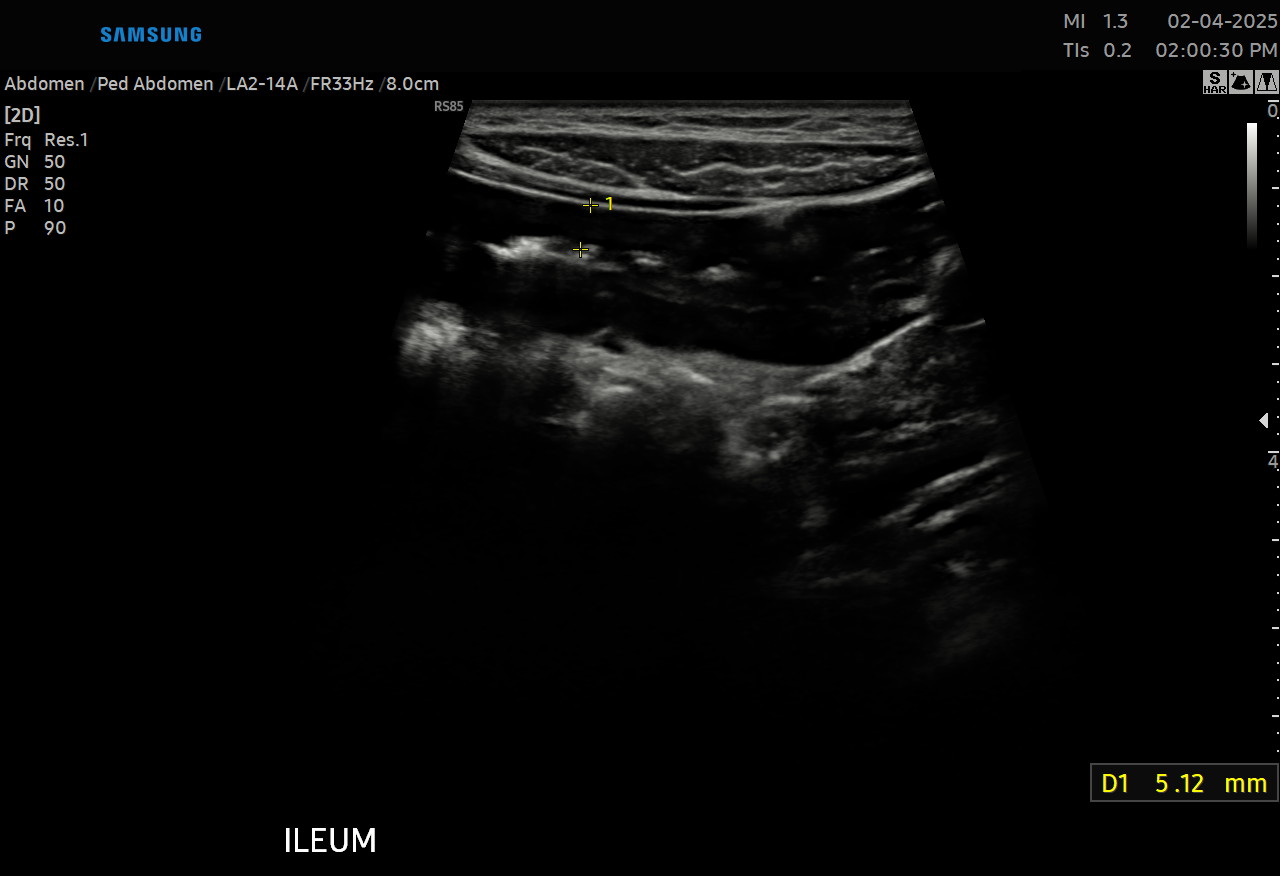By: Alexandra Hudson, MD FRCPC, University of Alberta, Stollery Children’s Hospital, Edmonton, Canada
Case Presentation:
A 13-year-old previously healthy male presents with over a year of mild generalized abdominal pain that is worsening and an unintentional weight loss of 15 pounds over the previous 6 months. He has no diarrhea or constipation. He is mildly fatigued but otherwise feels well and is not missing school. Previous biochemical investigations are limited but shows a persistently elevated CRP of ~ 40 mg/L. He has seen his primary care provider but today presents to the pediatric gastroenterology clinic for an initial consultation where intestinal ultrasound is performed as part of his visit.
Ultrasound Findings:
The colon and terminal ileum appear normal with a bowel wall thickness (BWT) measuring well below 2mm in all segments and no hyperemia. The small intestine starts to appear abnormal approximately 5cm proximal to the distal terminal ileum, extending for a total length of approximately 25cm. This reflects the distal and proximal ileum, and also likely into the jejunum. The abnormal bowel wall measures 4-5mm in thickness.

There is moderate hyperemia (modified Limberg score of 2 with stretches of long signals of hyperemia contained within the bowel wall). There is partial loss of bowel wall stratification, it is hypoechoic, and there is surrounding mesenteric inflammatory fat proliferation. There is no adjacent free fluid or lymph node proliferation. There is a small amount of luminal content suggesting mild luminal narrowing due to the inflamed bowel wall, but there is no obvious bowel pre-stenotic dilation to suggest a stricture.
Clinical Course & Management:
Given the suspicion for small bowel Crohn’s disease, a fecal calprotectin is sent (returns >8000 ug/g) and endoscopy is booked. Endoscopy matches the IUS findings, as the colon and terminal ileum (seen for approximately 5cm) appear macroscopically normal. Granulomas are seen on the biopsies from the descending colon and rectum.
A MRE/MRI pelvis is done which matches the IUS findings, showing 30cm of ileum and jejunal inflammation with pseudo-sacculation, possible mucosal ulceration, and suspected stricture but no pre-stenotic dilatation. There is also a small inter-sphincteric perianal fistula. These findings all together support the diagnosis of Crohn’s disease. He is started on exclusive enteral nutrition until infliximab is able to be organized to start a few weeks later.
Teaching Points:
- It is important to trace and connect the bowel segments together in order to identify the correct anatomical bowel segment.
- The distal/proximal ileum is in a similar anatomic location to the terminal ileum, sitting above the right iliac vessel, so these can be mistaken for each other.
- The inflamed proximal ileum could also have been mistaken for the ascending colon as it similarly courses superiorly up to the liver.
- Using IUS in the initial consultation can significantly change the clinical impression and help triage endoscopy use and timing, especially when there is a limited biochemical assessment and only mild clinical symptoms.

